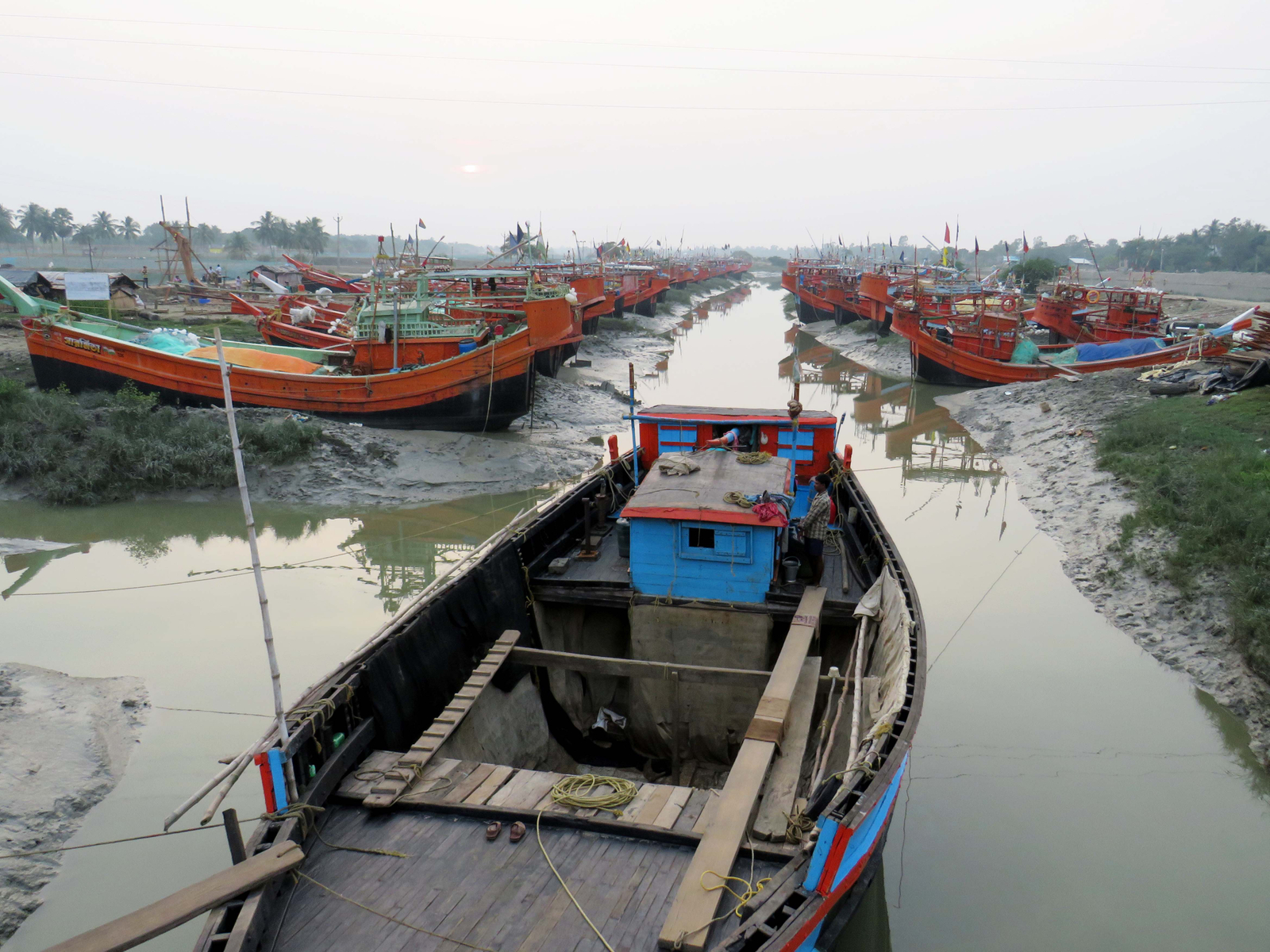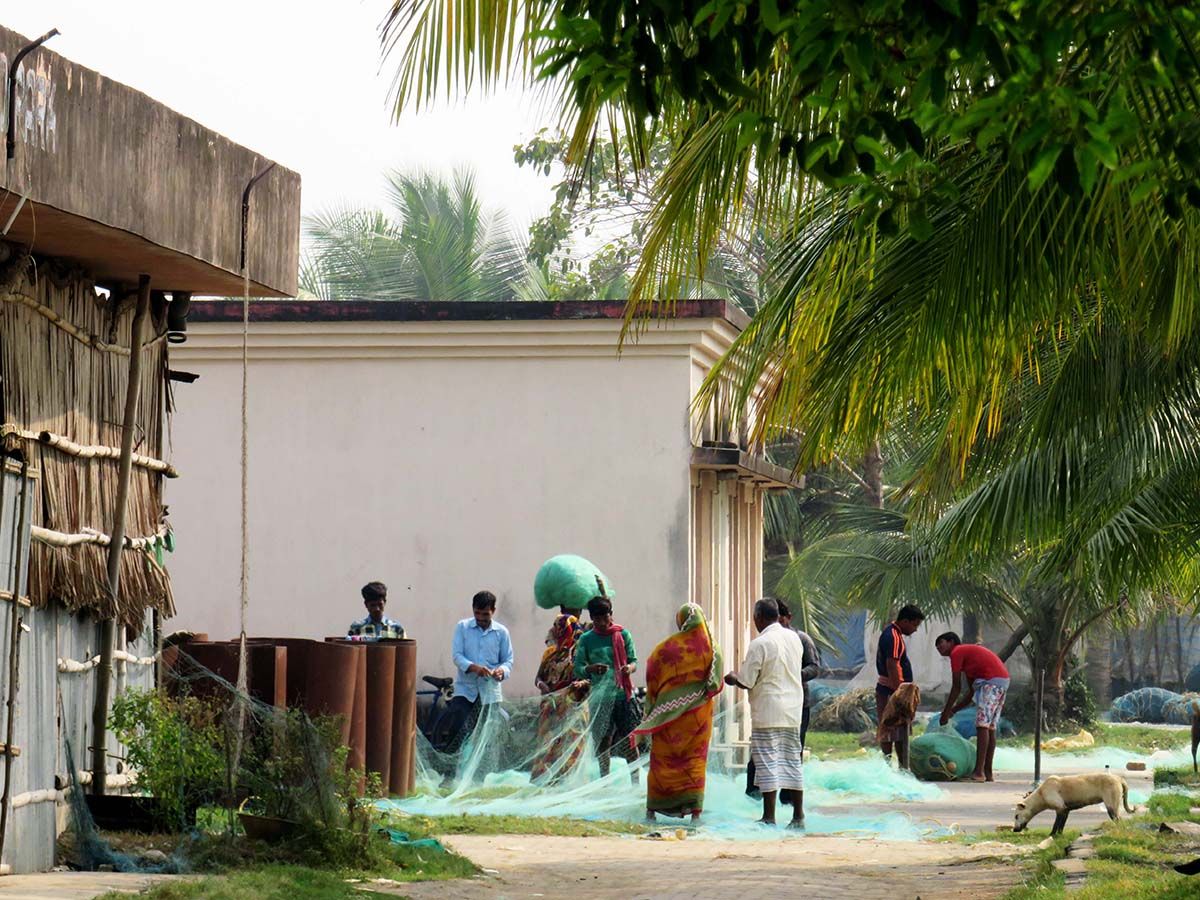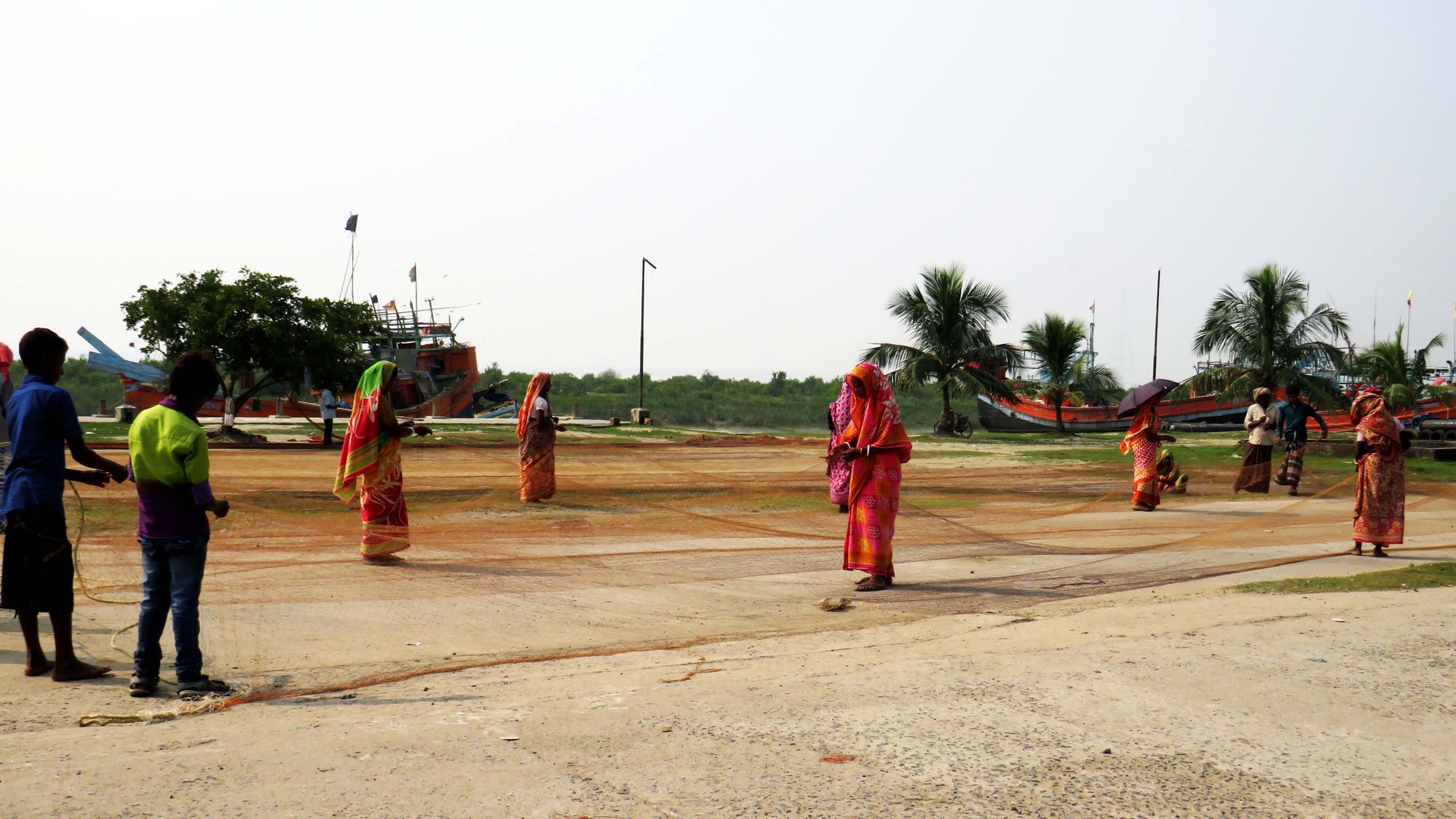Namrata Acharya takes us to the village of Boyarmari, West Bengal, where shrimp farmers and fishermen have noted significant improvements in their stock after a year of relatively low industrial activity and consequent pollution. This contrast highlights the impact of tanneries, in particular, on the local ecosystem and the region's productive waterways.
Around mid-April, when Siddik Mollah, a fisherman at a village called Boyarmari, located in the district of North 24 Parganas in West Bengal, found that day-by-day shrimps were growing unhindered on his Bheri (embanked water body with shallow water), he was pleasantly surprised. By the end of April, Mollah’s Bheri had a healthy population of shrimp.
Yarul Islam Mollah, another fisherman at Boyarmari, also had a similar experience. This year, nearly 90 percent of shrimps survived on his Bheri.
For almost the last ten years, every year, the picture was different. The end of April would come with scenes of dead shrimp floating on Bheris at Boyarmari. On average, between 50-80 percent of the shrimps would die in about 30-35 days of releasing larvae in the water body. This year, almost 95 percent of the shrimp survived, said Mollah.
Small canals connect Bheris at Boyarmari to a river called Bidyadhari, a saline water river, suitable for shrimp cultivation. The river flows through the district of North 24 Parganas to the Bay of Bengal through the deltaic Sundarban region. Bidyadhari receives saline water under tidal effect from the sea. However, it also acts as a conduit to Kolkata’s sewage and effluents released from various factories, including tanneries, garment, plastic and glass factories.
"Effluent from tanneries is the main reason for the contamination of water. Since the last ten years, as the number of tanneries started increasing, water turned more and more contaminated and shrimps started dying," said Mollah.
Now, with factories remaining shut or working only in a limited capacity for the last four months due to the nationwide lockdown, anecdotes from fishers claim cleaner water has helped fish and other aquatic species to survive.

Salinity, pollution puts livelihoods at stake
About 25 years ago, most of the existing Bheris were rice fields. As shrimp from West Bengal started gaining popularity in the export markets, farmers saw profitability in shrimp cultivation. They started converting agricultural land into Bheris, and the state government too supported this drive. Shrimp cultivation became a booming trade, not only at Boyarmari, but also in large parts of North 24 Parganas.
However, after Aila, a devastating storm that hit coastal West Bengal in 2009, many Bheris turned unfit for shrimp cultivation due to excess salinity. In normal circumstances, this salinity should have normalised naturally in the course of two to three years. However, increasing river pollution never let the perfect condition for shrimp cultivation to prevail again.
Shrimps were subject to a disease called White Spot, a bacterial infection, which kills hundreds of shrimp in one go. Contaminated water is one of the major causes of this infection. As a result of this continued dip in shrimp production, many fishermen migrated outside West Bengal in search of jobs.
Rising river pollution
In March 2019, hundreds of farmers from North 24 Parganas staged a protest at Basanti Highway, a major road in the district, against the rising pollution level in Bidyadhari. They claimed contaminated water of the river was destroying their crops, fish, shrimp and causing health problems in children.
Effluents from a large number of tanneries in and around Kolkata fall in Bidyadhari.
"Tannery industries are listed as the most polluting activity due to the wide type of chemicals applied during the conversion of animal skins into leather. Chromium salts, phenolics, tannins, organic matter, among other products, are constantly released to the environment in tannery wastewater. These pollutants offer environmental risks to the aquatic life and human health," states a 2018 research article.
Kolkata has historically been a hub for leather production. It is home to more than 500 tanneries, which were once concentrated in Tangra, Tiljala and Topsia areas in the eastern fringes of the city. As the city expanded, these areas became densely populated localities, and the pollution on account of the tanneries created havoc for residents. In 1995, the Supreme Court ordered 538 polluting tanneries in the areas to relocate to the outskirts and also set guidelines for leather waste treatment through effluent plants.

In 2005, the West Bengal government set up a new leather hub, the Calcutta Leather Complex, at Bantala, outside Kolkata in North 24 Parganas. The complex included an effluent treatment plant. At present, there are about 375 tanneries operating in the complex.
According to Ramesh Juneja, president of the Calcutta Leather Complex, 150 new tanneries have come up in the complex in the last ten years.
"The complex had a capacity of treating 20 million litres of effluent a day, and it was sufficient for existing units. The complex would add additional capacity of treating 20 million litres of effluent a day soon, as a number of new tanneries are expected to open establishments in the complex in the coming days," said Juneja.
In 2018, a Comptroller and Auditor General (CAG) report observed that as of April 2017, 49 tanneries out of 376 tanneries in the leather complex were not connected with common effluent treatment plant (CETP). As a result, untreated effluents were discharged into the nearby river without treatment, leading to pollution.
Take up the issue of river pollution to save and improve the livelihood of the people engaged in shrimp cultivation.
Juneja claimed illegal tanneries outside the complex were the source of river pollution.
"About 200 illegal tanneries are still operating in Tiljala and Topia region, and they are the source of pollution in the river. Tanneries in the leather complex have proper treatment plant and adhere to all norms," he said.
"We need to seriously take up the issue of river pollution to save and improve the livelihood of the people engaged in shrimp cultivation. Water is an important factor in fishing and higher level of oxygen in the water makes a big difference in the quality and quantity of fish. Shrimp has potential to provide employment to a large number of people, including migrant workers in the region. Uncontrolled and unethical practices of releasing effluents in the river is a major threat to their livelihoods," said Aniruddha Dey, chairperson, Professional Institute for Development & Socio Environmental Management (PRISM), an NGO.
Silver lining in fish production this year
More than 100 kms away from Boyarmari, at Tribeni, a town on the banks river Ganga in the Hooghly district of West Bengal, Arindam Chakraborty, a researcher in the field of fisheries, spotted fish like chital and aar floating alive in good numbers on the banks of the river. Other years, the shore would be populated with dead fish.
For years, an old shipwreck just, about 100-150 feet away from the bank of the river has been a nesting ground of several sweet water fish that grow in parental care. The nooks of the shipwreck provided safe shelter for the fish to breed, as it remained out of bounds of fishing nets. However, when industrial effluent from nearby paper factories mixed with water, the fish would die a natural death and were found floating on the banks. But this year, they were mostly alive.


"Clean water, less industrial effluents helped the fish survive," said Chakraborty. With less pollution, this year, there are expectations that fish stock across West Bengal will rise.
"Due to less pollution, the distribution pattern of fish is better this year. They could migrate till long distances in the river from the sea. Also, during lockdown as fishing activities had come to halt, the population of riverine fish was higher," said B K Mahapatra, principal scientist at Central Institute of Fisheries Education, Kolkata.
However, fishermen are yet to see higher fish production turn into profits. Due to western disturbance, not many fishermen could venture into sea for fishing this year. But they do anticipate a good fish stock.
"This year, the production of fish like Vemmani Shrimp and Pomphlet was better than last year. However, it will take some time to assess the overall production, as fishermen could hardly venture into the sea due to bad weather. We do expect better fish production this year," said Bijon Maity, secretary of the West Bengal United Fishermen Association.
While profits from fishing remain doubtful, fish are surely breathing again in West Bengal.




